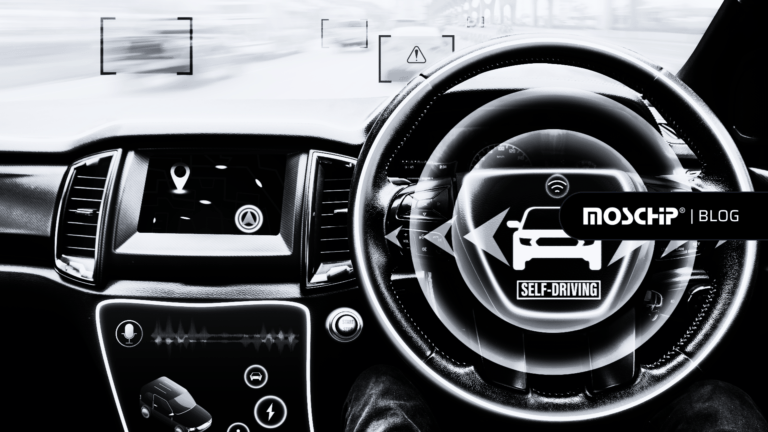The Importance of Embedded Systems in Automation – A Few Applications
Embedded systems are here to make the world a better place. These systems can be found on all smart devices. The items are adaptable, versatile, and come with several advantages.
Embedded systems are applicable in various industries. Examples are robotic systems, home appliances, space, transportation medicine, and communication.
The following article covers 8 applications of automation in embedded systems.
What is Embedded System?
An embedded system is a microcontroller-based system designed to perform a dedicated task. It’s a combination of computer hardware and software. It can function alone or as part of an extensive system. These systems contain a single-chip microcontroller like Cortex, ARM, DSPs, and microprocessors.
Some of its features include size, power, reliability, accuracy, and adaptability. It varies from a regular workstation server in design, cost, purpose, and human involvement.
Here are three types of embedded systems :
- Real-time embedded systems
- Mobile embedded systems
- Network embedded systems
The systems impact our lives in different ways. These include processes like commuting, running businesses, and exercising.
To ensure any embedded system is of excellent quality and meets the required standards, you should test it. Automation testing software is necessary to guarantee the security of these tools in critical applications. Examples include medical, automobile applications.
It’s also necessary to conduct end-to-end testing to ensure the software performs as expected from beginning to end.
The testing is done to:
- Check for any bugs in the software
- Improve performance
- To reduce risks to the company and users
- Cut down maintenance and development costs.
Here are some applications of embedded systems.
1. Biomedical Sensors
Biomedical application systems enable doctors to monitor health and diagnosis treatment remotely. Doctors use telemedicine and other remote systems for this purpose.
Patients can easily monitor their health progress even when at home. Doctors can check what’s wrong with patients without necessarily performing surgery. Patients with diabetes can also measure their blood sugar levels using a glucose monitor.
These smart devices also help users monitor their heart rates, glucose levels, and blood pressure.
These systems are also coming up with better connectivity. This makes it easier for a patient to transmit data collected from these devices easily.
2. Pacemakers
Embedded systems in pacemakers can sense heartbeats and track heart health. Heart problems keep increasing in developing countries. The sensors in the pacemakers can record all activities of the heart. Through analyzing information from the pacemakers, doctors will adjust different plans to fit the care of the patients.
3. Fitness Trackers
Fitness trackers like Fitbits are embedded systems. They can track weight, activity levels, and body composition. Also, they help in monitoring your health. Fitness trackers collect data related to your body temperature, body weight, and the number of footsteps. The information is then sent via WAN to servers like GPRS or LTE.
The tool is excellent for patients working with their doctors to lose weight or live a healthier life. Doctors can monitor a patient’s daily activities. They can also adjust their treatment and fitness plans to help them hit their fitness goals.
You can use fitness trackers for sports training.
4. CPAP machines
Doctors can track the sleep patterns of people struggling with sleep apnea through CPAP machines. The machines automatically communicate to the doctor if the patient hasn’t been sleeping well. If the doctor notices that the patient hasn’t been sleeping peacefully, they can reach out. They then proceed to change their treatment plans to what’s working.
5. Automobiles
Automated embedded systems are designed and installed to ensure the safety of automobiles. Cars contain sensors and advanced technologies. The embedded system is the heart of a vehicle’s electronic system since it allows flexibility and adaptability.
Automated UI testing is necessary to ensure automobile users are safe from any impending danger. It’s essential to minimize the risk of accidents.
Examples of automotive embedded systems in automobiles are:
- Adaptive speed control
- Pedestrian recognition
- Airbags
- Merging assistance
- Drive-by wire
- Automatic parking
- Satellite radio
- Emission control
- car breakdown warning
- Vehicle entertainment system
- Anti-lock braking system
- Night vision
- Head up display
- Backup collision sensors
- Adaptive cruise controls
6. Central Heating System
Image source: pixabay
You can find embedded systems in several structures that require temperature control to allow comfort and temperature. Examples of these structures include hospitals, schools, factories, groceries, homes, and office buildings.
The central heating systems can either heat up air or boil water to make rooms hotter. All the activities happen in either a furnace room or a boiler room. A good rule of thumb to remember is that a furnace heats air and a boiler heats water. It’s then transferred to different sections across a room to distribute heat.
These heaters have thermostat controls to adjust the temperature.
Without temperature controls, the central heating systems could overheat some rooms while leaving others cold.
7. Factory Robots
A factory robot structure allows it to perform complex tasks even under dangerous situations. Because of the embedded integrated systems, robots use sensors and actuators to check out their environment. After that, they perform the intended output safely.
Because of embedded systems, they don’t have to rely on external control from computing systems. Robots are integrating artificial intelligence and machine learning to ensure equipment is more smart, effective, and safe. They are prone to fewer errors.
Factors robots perform a variety of tasks like:
- Quality monitoring
- Welding
- Painting
- Assembly line
- Palletizing.
8. GPS Systems
GPS is a global navigation satellite system that provides time, location, and velocity synchronization. It’s one of the most used navigation systems for automobiles. You can find GPS systems in a car, a watch, and smartphones.
The device receiving the data contains an integrated GPS to facilitate the use of a global positioning system. Embedded GPS applications allow individuals to find their locations or destinations easily.
Conclusion
Embedded systems are in almost all devices you interact with daily. Hence a massive part of our lives. These systems have made work and life more manageable.
Since they are fast and highly stable, you can depend on them. The world today would look different without these systems.
Lastly, don’t forget to test the equipment using software testing tools for all users’ safety. It’s only better to be safe than sorry. – Article by Daniel M
MosChip’s Embedded Systems for Everyone.
Author
-
Mustaqh Ali Shaik is a versatile Digital Marketing Manager at MosChip with more than a decade in helping various technological companies achieve their brand value & growth including acting as the Marketing Chiar for the various International Conferences organized by IESA, VLSID IEEE, etc. His expertise spans SEO, SEM, email marketing, WordPress, social media optimization, and content creation allowing him to effectively manage teams and guide individuals to achieve strategic goals. Mustaqh is a working manager with strong analytical abilities, in-depth knowledge of industry tools, and passion for staying up-to-date with the latest trends that have consistently delivered impressive digital presence & sustainable growth for many organizations with zero investments. He is an all time learner and an instructor for many freshers/students who are looking for a career in Digital Marketing.







